Tired of Weak Veg Meals? Try These Protein-Rich Foods Vegetarian Diets Love
Fuel your day with protein-rich foods vegetarian eaters trust for strength, energy, and fewer cravings — no meat needed.
If you think a vegetarian diet means missing out on protein, you’re not alone—and you’re also not right. Research from the Harvard T.H. Chan School of Public Health shows that plant-based eaters can easily meet their protein needs with the right food choices.
In fact, studies suggest most vegetarians get more than sufficient protein daily without touching meat. The real issue? Many meals still feel weak because they lack variety.
This guide will help you fix that—showing you tasty, protein-rich food that vegetarian diets love, so you stay strong, energized, and full longer.
Why Vegetarian Diets Need Enough Protein-Rich Foods
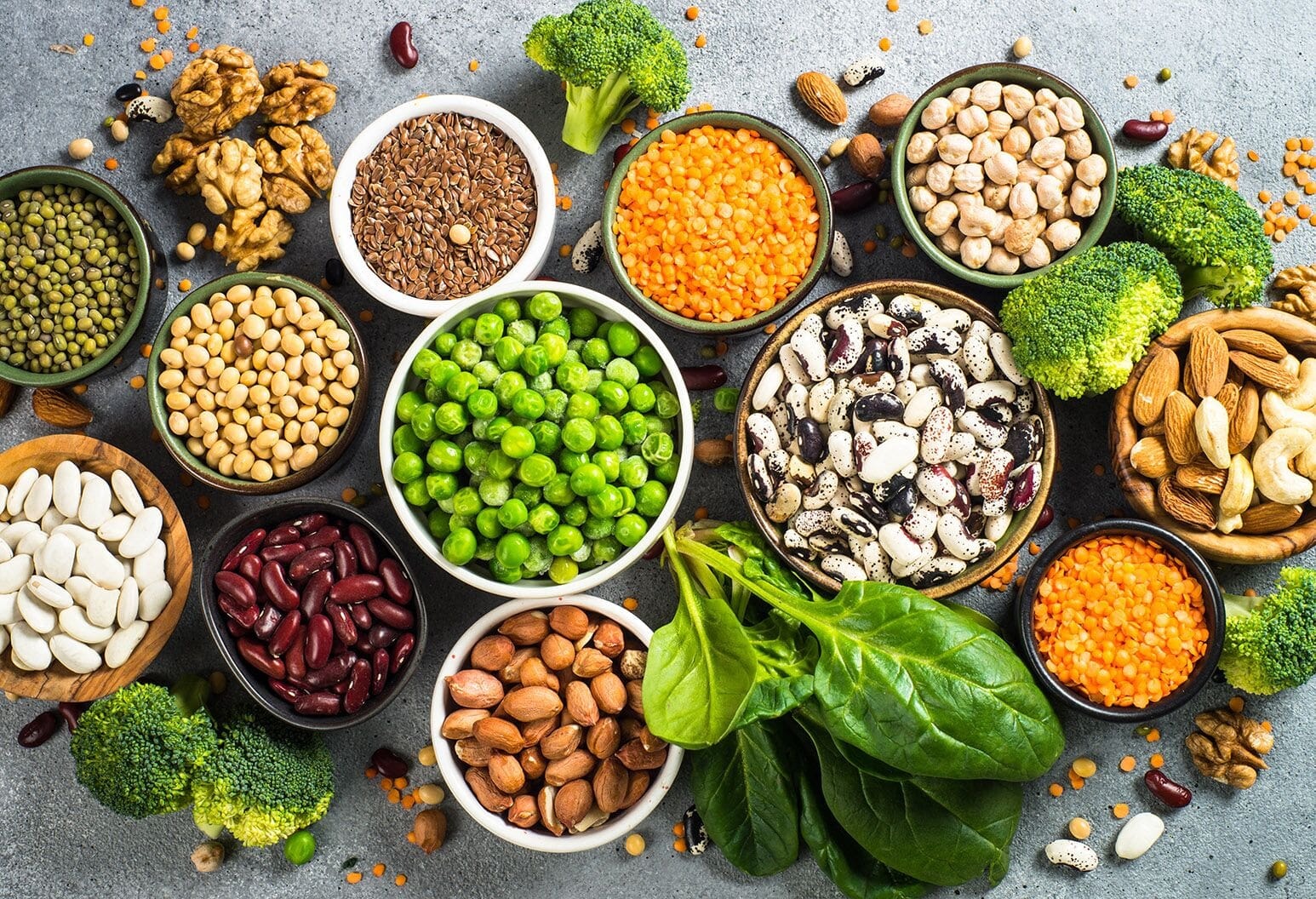
Many people believe a vegetarian diet may not provide enough protein, but that’s not true. Studies from the Academy of Nutrition and Dietetics show that well-planned vegetarian and vegan diets meet all protein needs and even lower risks of heart disease.
A well-planned plant based diet can give you all the protein and nutrients you need. The key is variety—mixing plant protein, which is a great source of protein like lentils, beans, and soy milk with whole grains to form a complete protein.
Understanding Plant-Based Protein and Essential Amino Acids
Plant-based protein is found in foods such as kidney beans, cottage cheese, chia seeds, and brown rice. Unlike animal protein, some of these lack one or more essential amino acids. But don’t worry—you can fix that by combining high protein foods. For example:
-
Beans, lentils, and seeds are plant based foods that provide protein and fiber together. Rice + beans = complete protein
-
Hummus (chickpeas + sesame) = balanced dietary protein intake
-
Quinoa = contains all nine essential amino acids
Quick tip: Spread your protein intake across meals instead of eating it all at once. This helps with muscle repair, steady energy, and optimal health.
“Most vegetarians can easily meet their daily protein requirements through a variety of plant foods.” — Harvard T.H. Chan School of Public Health
Comparing Plant Protein vs Animal Protein for Human Health
| Factor | Plant Protein | Animal Protein |
|---|---|---|
| Source Examples | Lentils, beans, quinoa, soy, nuts, seeds, whole grains | Eggs, milk, cheese, chicken, fish, red meat |
| Amino Acid Profile | Often incomplete; some lack essential amino acids (except soy, quinoa, chia) | Complete; usually contains all 9 essential amino acids |
| Digestibility | Slightly lower digestibility due to fiber and anti-nutrients (like phytates) | High digestibility and absorption |
| Nutrient Content | High in fiber, antioxidants, vitamins, minerals, and healthy fats | Rich in vitamin B12, heme iron, zinc, and omega-3s (fish) |
| Health Benefits | Supports heart health, lowers cholesterol, helps with weight management, reduces risk of chronic disease | Builds muscle quickly, supports recovery, provides dense nutrition |
| Health Risks (if overconsumed) | Generally safe; excess may cause bloating from fiber | High intake linked to cholesterol, heart disease, certain cancers (especially processed/red meats) |
| Environmental Impact | Lower greenhouse gas emissions and resource use | Higher carbon footprint and resource demand |
| Best For | Long-term health, sustainable diets, weight control, vegetarians/vegans | Muscle gain, quick recovery, people with higher protein needs |
Top Protein-Rich Foods Vegetarian Eaters Can Add Daily
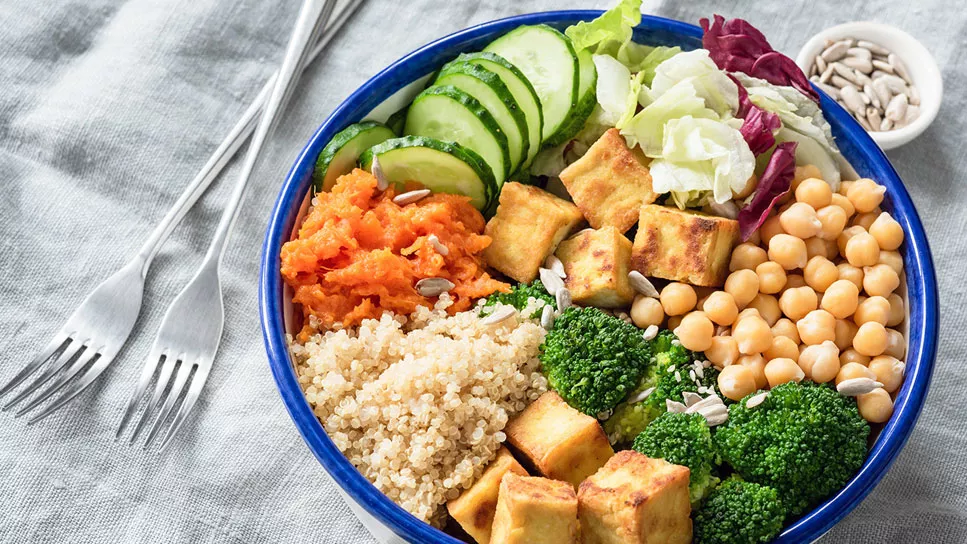
1. Cottage Cheese
Cottage cheese is a soft dairy product made from curdled milk, and it is one of the high protein vegan foods available. It’s low in saturated fat and high in protein content, making it a favorite for both kids and adults.
Key nutrients:
-
11g of protein per 100g serving
-
Calcium for strong bones
-
B vitamins for energy
-
Small amounts of healthy fats that support brain health
Recipe ideas:
-
Mix with fruit like pineapple or berries for a quick snack.
-
Spread on whole-grain toast and top with tomato slices.
-
Add to salads for extra dietary protein intake.
Fun fact: Many athletes in the U.S. choose cottage cheese because it helps with muscle repair and muscle building without adding too many calories.
2. Soy Milk
Soy milk is a plant-based drink made from soybeans. It’s a popular dairy alternative that works well for people with lactose intolerance or those on a vegan diet due to its high nutritional value.
Key nutrients:
-
7g of protein per cup (fortified versions may have more)
-
All essential amino acids, making it a complete protein
-
Calcium and Vitamin D in fortified brands
-
Isoflavones, which may support heart health
Recipe ideas:
-
Use in smoothies with bananas and oats for a filling breakfast.
-
Pour over cereal or granola for a high-protein start to your day.
-
Froth it for lattes or hot chocolate.
“Soy is one of the few plant proteins that contains all nine essential amino acids.” — Harvard T.H. Chan School of Public Health
Adding soy milk regularly can help you meet sufficient grams (g) of protein needs and support optimal health without extra saturated fat.
3. Kidney Beans and Black Beans
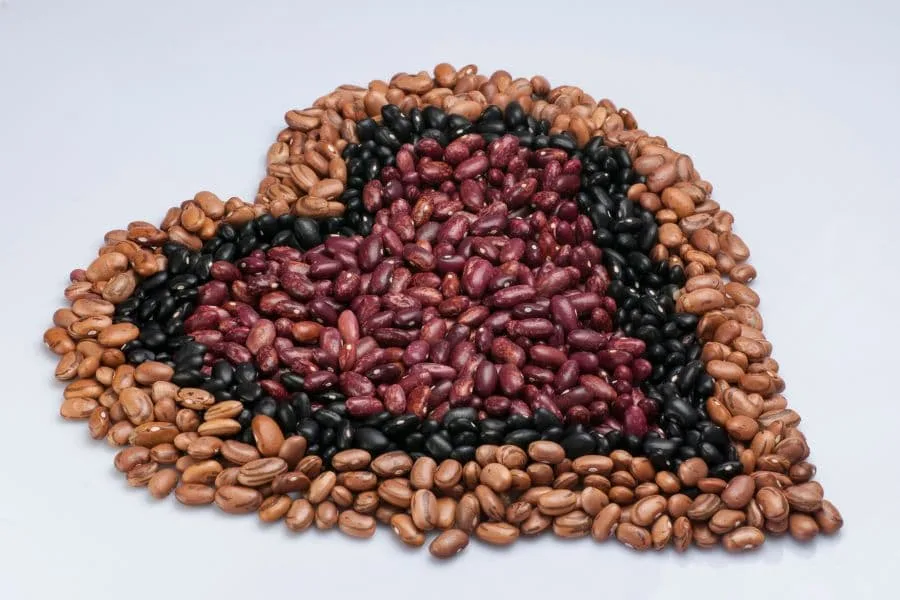
Beans are staple foods in many cultures and one of the best vegetarian protein sources. Both kidney beans and black beans are affordable, filling, and loaded with dietary protein.
Key nutrients:
-
8g of protein per 100g serving
-
High fiber that supports digestion and weight loss
-
Iron and zinc to prevent nutrient deficiencies
-
Low in fat and calories, making them perfect for a balanced diet
Recipe ideas:
-
Cook kidney beans with rice for a classic dish that provides a complete protein.
-
Make black bean tacos with vegetables for a fun dinner.
-
Add beans to soups or stews for extra protein content.
Pro tip: Always soak beans before cooking to improve digestibility and lower bloating.
4. Chia Seeds and Hemp Seeds
Chia seeds and hemp seeds are small but loaded with nutrition. They are easy to sprinkle on almost anything you eat.
Key nutrients:
-
About 5g of protein per 2 tablespoons of chia seeds
-
About 10g of protein per 3 tablespoons of hemp seeds
-
Omega 3 fatty acids for heart and brain health
-
Fiber for digestion and steady energy
Recipe ideas:
-
Mix chia seeds with milk or soy milk overnight for pudding
-
Add hemp seeds to smoothies for a quick protein boost
-
Sprinkle both on salads, oats, or yogurt for crunch
5. Pumpkin Seeds
Pumpkin seeds, also called pepitas, are a snack packed with plant protein and minerals.
Key nutrients:
-
About 7g of protein per 1 ounce
-
Rich in magnesium, zinc, and iron
-
Provide healthy fats that support muscle repair and energy
Recipe ideas:
-
Roast lightly with salt for a crunchy snack
-
Blend into pesto or sauces for extra nutrition
-
Add to granola or trail mix for easy protein intake
Experts at Cleveland Clinic note that pumpkin seeds can help improve sleep and recovery because they contain tryptophan and magnesium.
6. Sweet Corn, Brown Rice, and Wild Rice
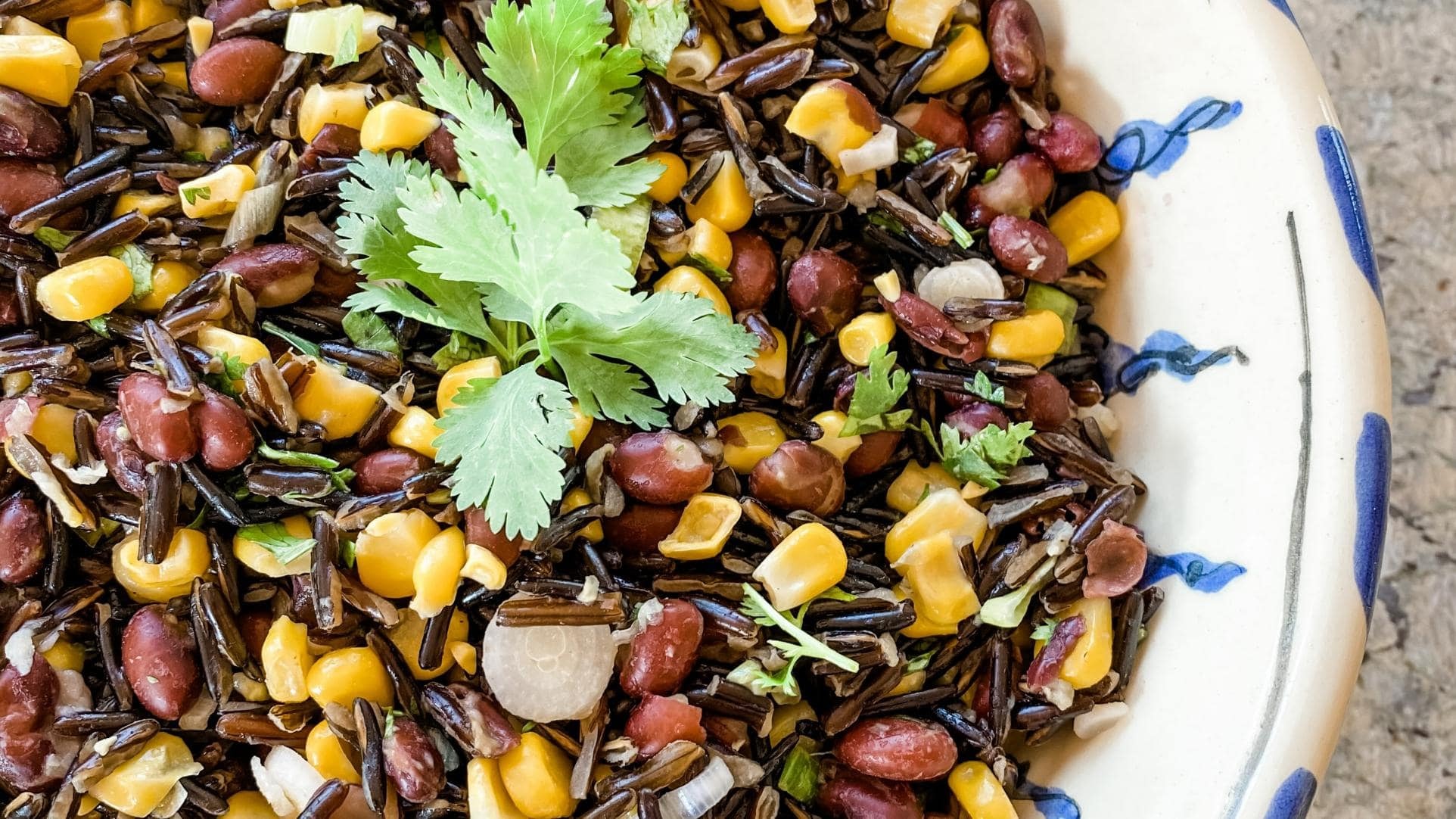
These are whole grains and vegetables often overlooked as vegetarian protein sources. While lower in protein than beans or seeds, they become powerful when combined with legumes.
Key nutrients:
-
Sweet corn: 5g protein per cup + fiber and antioxidants
-
Brown rice: 5g protein per cup + B vitamins
-
Wild rice: 6.5g protein per cup + iron and magnesium
-
Together, they provide a balanced diet and help form complete proteins when eaten with beans
Recipe ideas:
-
Mix brown rice with kidney beans for a filling bowl
-
Use wild rice in soups or salads for a nutty flavor
-
Roast corn with spices for a fun side dish
7. Green Peas
Green peas are small, sweet legumes often served as a side dish. Don’t let their size fool you—they’re a solid source of plant protein.
Key nutrients:
-
About 8g of protein per cup
-
Fiber for digestion and steady energy
-
Vitamins A, C, and K for immunity and bone strength
Recipe ideas:
-
Add peas to pasta or rice dishes for extra protein intake
-
Blend into soups for a creamy, filling option
-
Use in veggie stir-fries or wraps
8. Lentils (Dal)
Lentils are a staple in many cultures, especially in India. They’re one of the cheapest yet richest vegetarian protein sources.
Key nutrients:
-
About 18g of protein per cup (cooked)
-
Iron and folate to prevent nutrient deficiencies
-
Fiber to support weight loss and gut health
Recipe ideas:
-
Cook dal with spices for a quick, hearty meal
-
Add lentils to salads for extra protein content
-
Make lentil soup for a high-protein comfort dish
“Lentils are among the most affordable sources of protein worldwide,” notes the Food and Agriculture Organization (FAO).
9. Chickpeas (Chana)
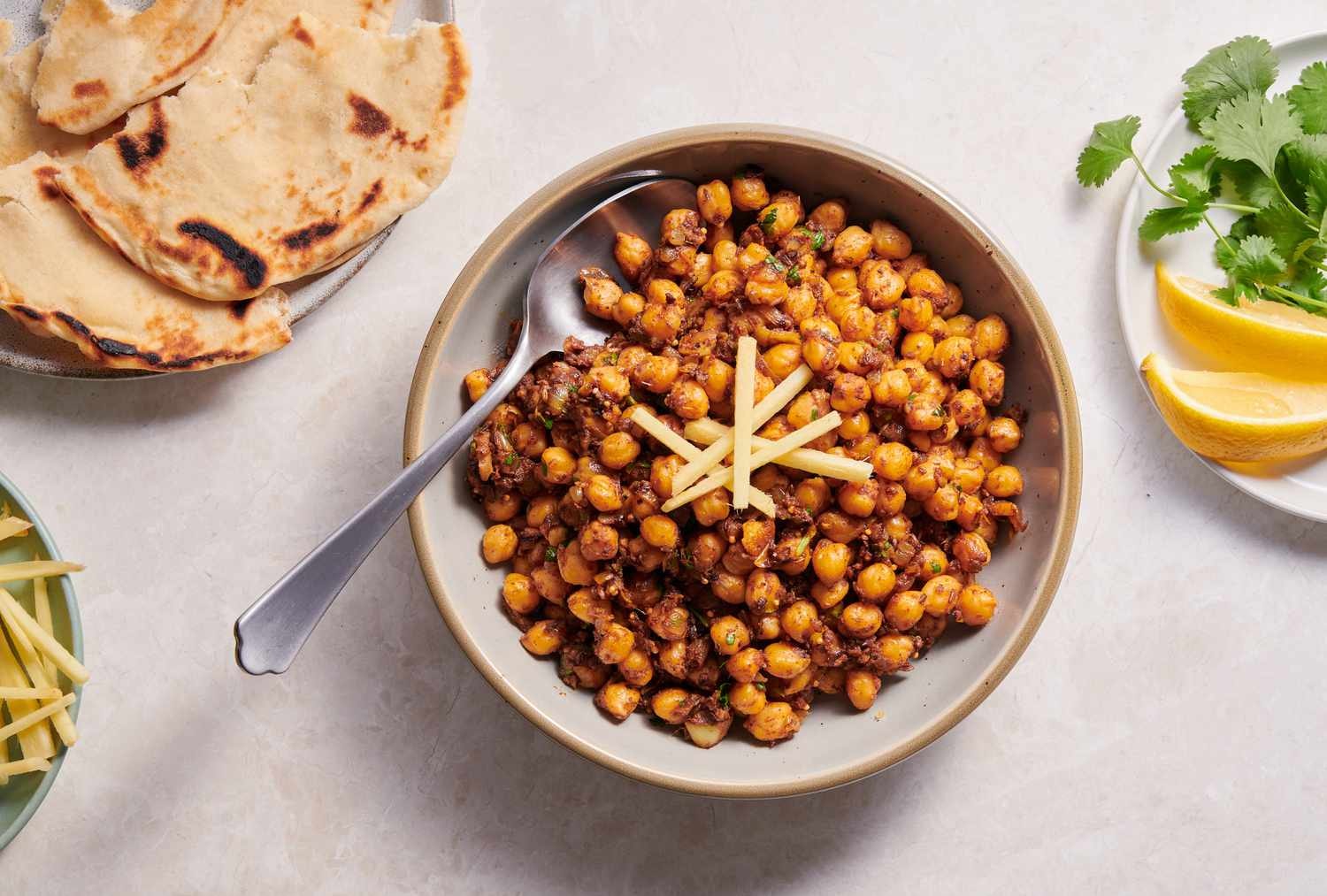
Chickpeas, also called chana, are a versatile legume used in hummus, curries, and snacks. They are packed with complete nutrition when paired with whole grains.
Key nutrients:
-
About 15g of protein per cup (cooked)
-
Magnesium and zinc for muscle repair and recovery
-
Fiber to keep you full longer
Recipe ideas:
-
Roast with spices for a crunchy snack
-
Add to curries or stews for a protein boost
-
Blend into hummus for dips and sandwiches
Harvard researchers highlight that chickpeas support balanced diet goals and have health promoting effects by lowering cholesterol and improving blood sugar levels.
10. Quinoa
Quinoa is a grain-like seed that has become popular worldwide. Among grains, quinoa offers the most protein per serving and is a complete source., which means it contains all nine essential amino acids your body needs.
This makes it one of the most powerful protein-rich foods vegetarian eaters can include daily.
Key nutrients:
-
About 8g of protein per cup (cooked)
-
Rich in fiber for digestion and fullness
-
Magnesium, iron, and B vitamins for muscle repair and energy
-
Gluten-free, making it safe for people with gluten sensitivity
Recipe ideas:
-
Cook quinoa instead of rice for a protein-packed meal
-
Toss with vegetables and beans for a quick salad
-
Use as a base for stir-fries or add to soups for extra protein intake
Practical Guide: How Much Protein Intake Do You Really Need?
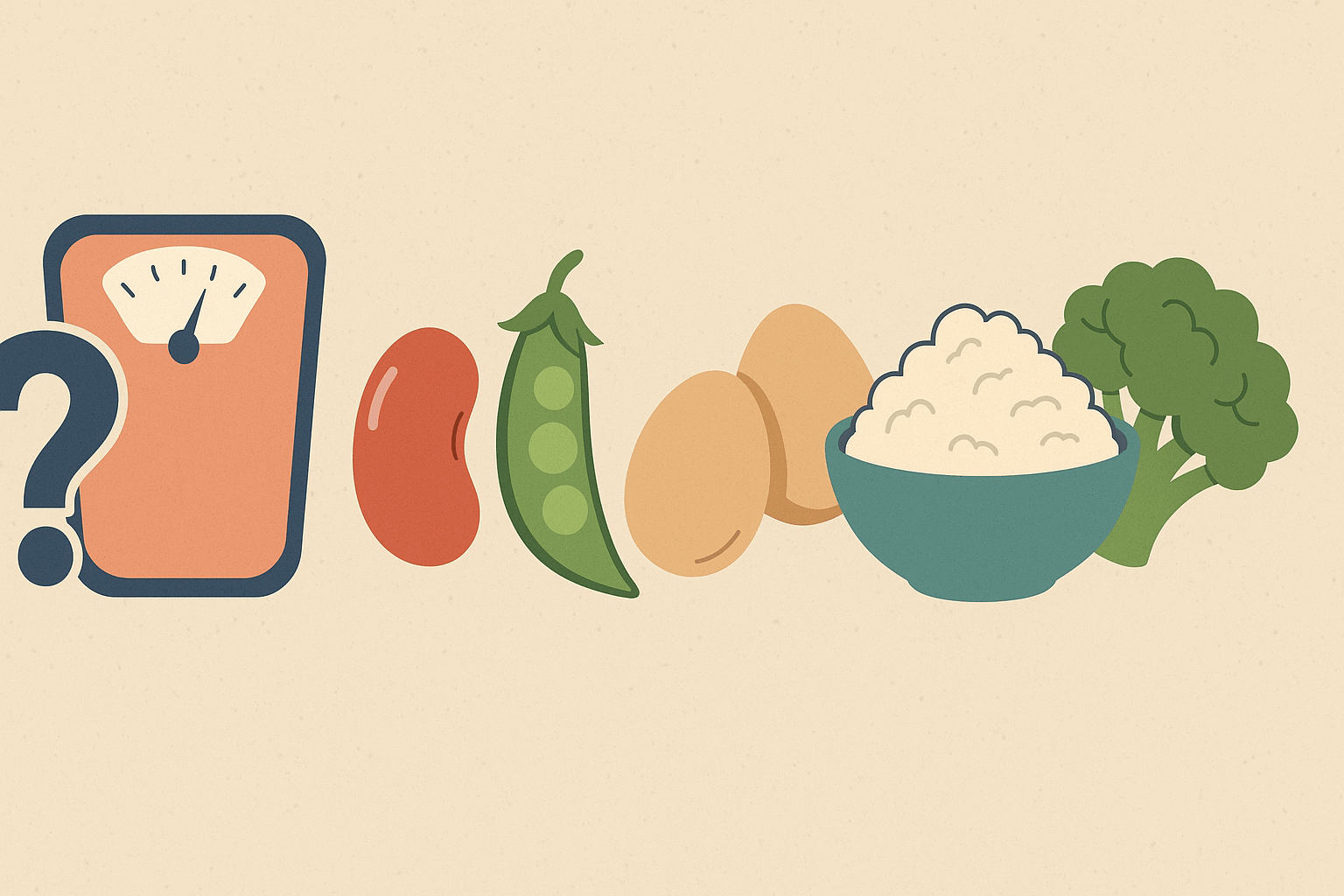
Your body needs the right amount of protein intake every day to stay strong and healthy. Experts from the U.S. Department of Agriculture suggest about 0.8 grams of protein per kilogram of body weight. That means if you weigh 60 kg, you need around 48 grams daily.
For active people or those building muscle mass, the need is higher. You can meet this easily with protein-rich foods vegetarian diets love, like lentils, quinoa, or cottage cheese, contributing positively to your overall protein intake.
High-Protein Vegetarian Foods With Maximum Protein Content for Muscle Building
| Food Item | Protein Content (per 100g) | Key Nutrients | Why It Helps in Muscle Building |
|---|---|---|---|
| Seitan (Wheat Gluten) | 25g | Iron, Selenium, Low Fat | Dense protein source often called “vegetarian meat”; excellent for muscle gain. |
| Tempeh | 19g | Probiotics, Iron, Calcium | Fermented soy product with complete protein and gut-friendly benefits. |
| Nutritional Yeast | 50g | Vitamin B12, Folate, Zinc | Adds cheesy flavor while boosting protein and recovery nutrients. |
| Peanuts | 26g | Healthy Fats, Magnesium, Vitamin E | High-calorie protein source great for bulking and sustained energy. |
| Almonds | 21g | Vitamin E, Fiber, Healthy Fats | Combines protein with antioxidants for recovery and tissue repair. |
| Pistachios | 20g | Potassium, Vitamin B6 | Supports energy metabolism and protein synthesis. |
| Sunflower Seeds | 21g | Vitamin E, Selenium | Helps reduce exercise-induced inflammation and aids recovery. |
| Greek Yogurt (Vegetarian Rennet) | 10g | Calcium, Probiotics | Thick, protein-dense option that supports gut and muscle health. |
| Amaranth | 13g | Lysine, Magnesium, Fiber | Ancient grain with complete protein profile; improves endurance. |
| Oats | 12g | Fiber, Iron, B-vitamins | Good pre-workout carb-protein balance for energy and repair. |
| Spirulina (Blue-Green Algae) | 57g | B-vitamins, Iron, Antioxidants | One of the highest natural protein sources; boosts endurance. |
Balanced Diet Tips for Vegetarian Protein Sources
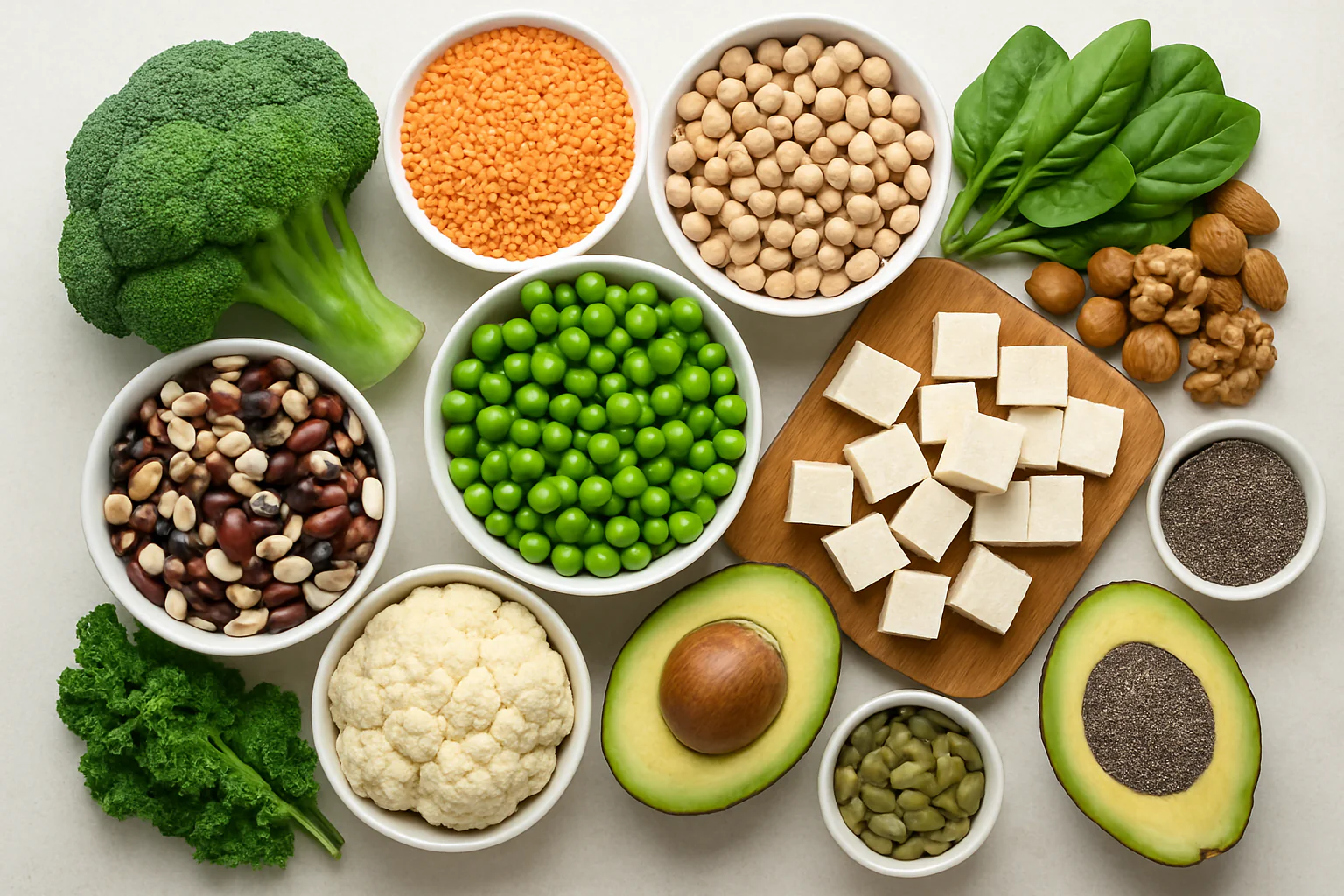
1. Pair Proteins for Completeness
Most plant protein sources are not complete on their own. They may miss one or more of the nine essential amino acids. Combining protein with whole grains and vegetables makes a healthy diet easy to follow.
How:
-
Combine grains with legumes, like brown rice with kidney beans.
-
Try hummus (chickpeas + sesame seeds) for a snack.
-
Mix lentils with whole grains in soups.
2. Spread Complete Protein Intake Across Meals
Eating most of your protein intake at one meal is less effective. Your body needs steady protein all day for energy and recovery.
How:
-
Add soy milk or chia seeds to your breakfast.
-
Include dal, peas, or chickpeas in lunch.
-
Snack on pumpkin seeds or cottage cheese in the afternoon.
-
Use quinoa or wild rice for dinner to hit your protein needs.
3. Mix Plant Protein with Dairy Alternatives
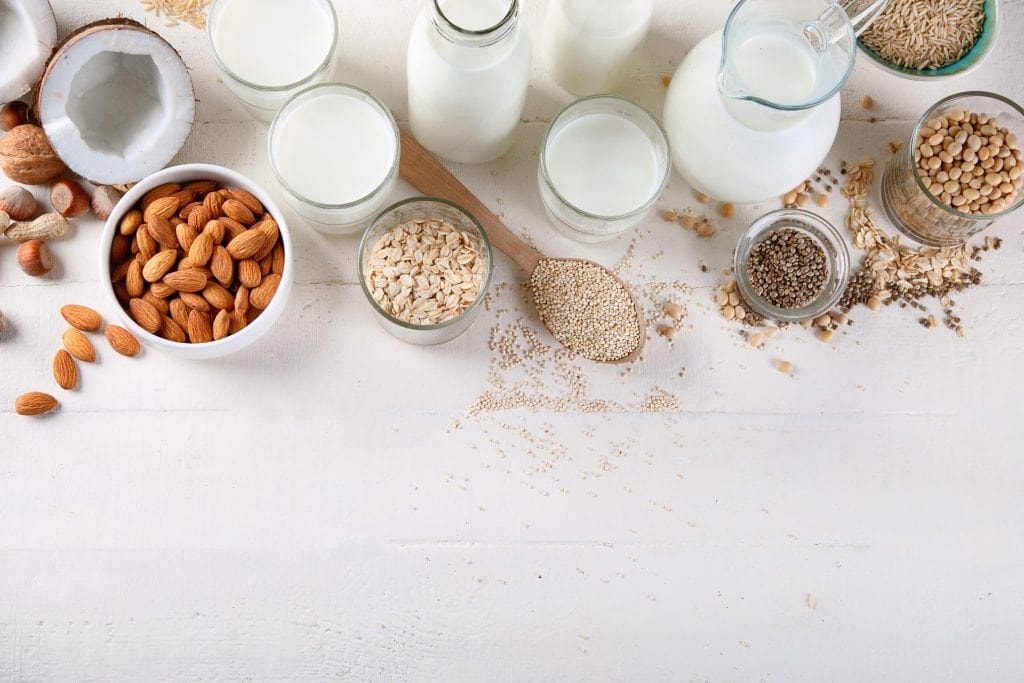
Adding dairy or fortified dairy alternatives helps boost your dietary protein intake and adds calcium and vitamins for optimal health.
How:
-
Use soy milk in smoothies or coffee.
-
Mix cottage cheese with fruit for snacks.
-
Try Greek yogurt (made with vegetarian rennet) for probiotics and protein.
4. Add Seeds and Nuts for Healthy Fats
Seeds and nuts are small foods with big power. They don’t just give plant protein; they also add healthy fats that support the brain, heart, and immune function, providing several health benefits.
How:
-
Add chia seeds or hemp seeds to smoothies or yogurt.
-
Snack on almonds or pistachios instead of chips.
-
Sprinkle pumpkin seeds or sunflower seeds on salads.
5. Watch Overall Calorie Intake
Too much of even healthy food can add unnecessary weight. Tracking overall calorie intake ensures you don’t eat more than your body needs.
How:
-
Balance high-calorie nuts with lighter foods like green peas or sweet corn.
-
Stick to portion sizes—one ounce of nuts is enough for a snack.
-
Spread your protein intake across meals to keep you full and prevent overeating.
6. Use Variety for Health Benefits
No single food has every nutrient. Eating a mix of vegetarian protein sources ensures you get all the essential amino acids, vitamins, and minerals.
How:
-
Rotate between lentils, kidney beans, chickpeas, and quinoa.
-
Combine whole grains with legumes for a complete protein.
-
Try new foods like wild rice or amaranth to avoid boredom.
Other Nutrients You Shouldn’t Ignore
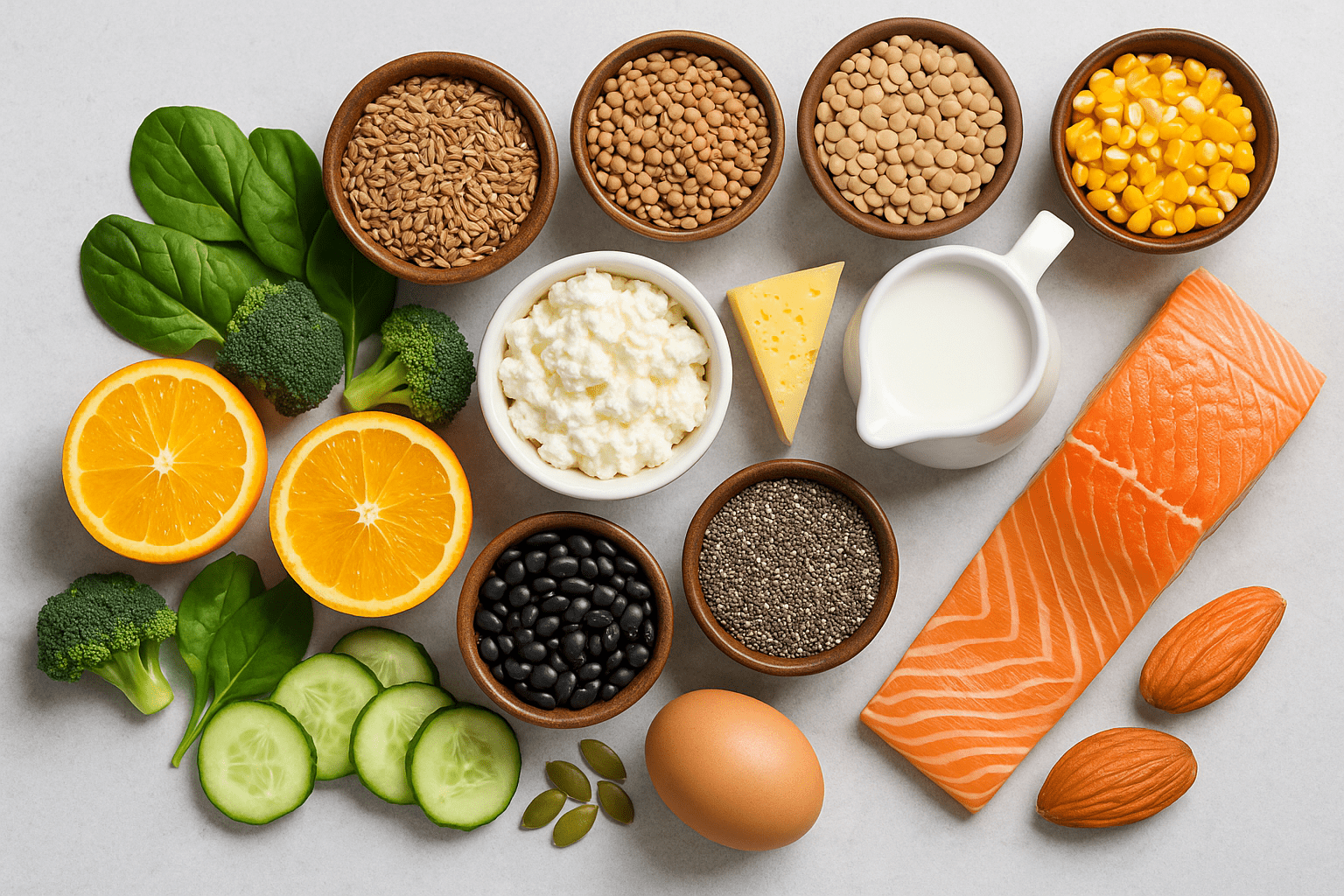
1. Iron and Zinc
Iron carries oxygen in your blood. Zinc helps with healing and immune function. Both are critical for energy and health.
How to get them:
-
Iron: lentils, chickpeas, kidney beans, and spinach
-
Zinc: pumpkin seeds, black beans, and cashews
The World Health Organization notes that vegetarians may need more iron because plant iron is absorbed less easily than meat iron. Pairing iron-rich foods with vitamin C (like lemon) helps your body absorb it better.
2. Calcium and Vitamin D
Calcium strengthens bones and teeth. Vitamin D helps your body absorb calcium. Together, they provide essential nutrients against weak bones.
How to get them:
-
Calcium: soy milk, dairy milk, and cottage cheese
-
Vitamin D: fortified plant-based drinks, sunlight, and mushrooms
3. Omega-3 Fatty Acids
These healthy fats protect your heart and brain. They are also anti-inflammatory.
How to get them:
-
Chia seeds
-
Hemp seeds
-
Walnuts
Cleveland Clinic reports that a diet rich in omega-3 fatty acids lowers the risk of heart disease. These also support recovery after workouts and better muscle repair.
4. Fiber
Fiber keeps digestion smooth and helps control overall calorie intake. It also supports a balanced diet.
How to get it:
-
Green peas, sweet corn, wild rice, and whole grains
-
Fruits and vegetables daily
High-fiber diets improve human health by lowering cholesterol and supporting optimal health.
5. B Vitamins
B vitamins give your body energy and help prevent fatigue. Vitamin B12 is especially important, but hard to get from plant foods.
How to get them:
-
Lentils, quinoa, and nutritional yeast
-
Fortified foods like cereals or soy milk
The Academy of Nutrition and Dietetics warns that vegetarians should monitor B12 closely since it mainly comes from animal products. Supplements may be needed.
Health Benefits of Protein-Rich Vegetarian Foods
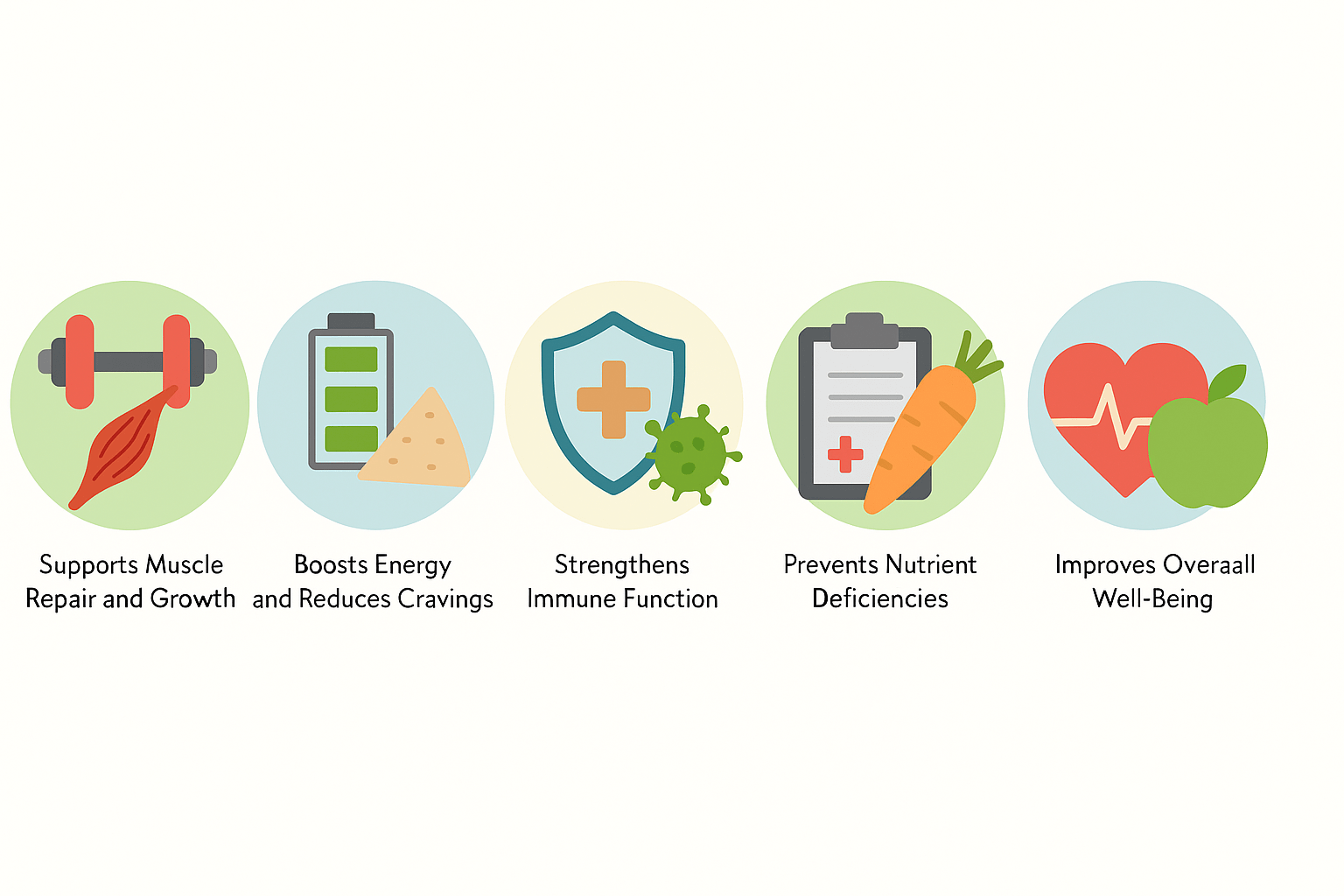
1. Supports Muscle Repair and Growth
Protein is the building block of muscles. When you exercise, your muscles get tiny tears that need protein to heal. Foods like lentils, quinoa, and cottage cheese give your body the amino acids it needs for muscle repair and growth.
If you eat the right amount of protein intake every day, you will recover faster and feel stronger. Experts at the American College of Sports Medicine recommend 1.2–2.0 grams of protein per kilogram of body weight for people who exercise often.
2. Boosts Energy and Reduces Cravings
Eating enough protein helps you feel full for longer and prevents sugar crashes. Snacks like roasted chickpeas or pumpkin seeds release energy slowly, so you don’t get hungry too quickly. This also makes it easier to manage weight loss because you avoid overeating.
Research shows that a higher dietary protein intake can reduce snacking and help people control their appetite better.
3. Strengthens Immune Function
Your immune system needs protein to build antibodies that fight off infections. Without protein, your body finds it harder to stay healthy. Protein plays a role in energy, recovery, and overall strength every single day.
Foods like soy milk, hemp seeds, and beans provide key nutrients that boost immune function. Adding zinc-rich foods such as lentils and green peas also helps your body heal faster and resist illness.
4. Prevents Nutrient Deficiencies
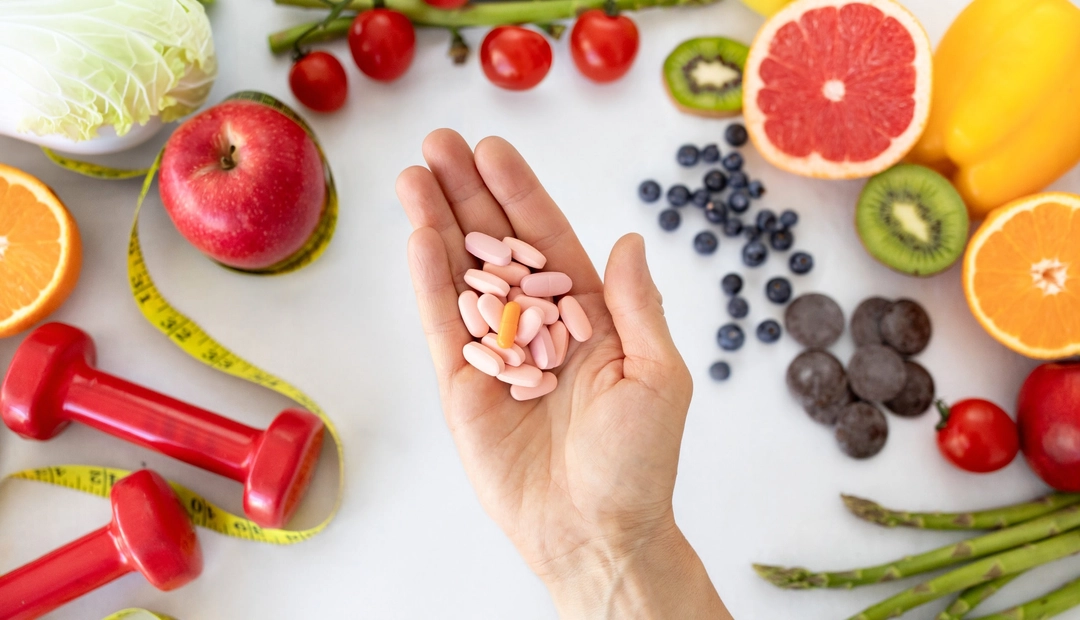
Protein foods do more than just give protein; they also carry important vitamins and minerals. For example, green peas provide iron, brown rice and wild rice add B vitamins, and seeds are rich in magnesium and omega-3s.
Eating a mix of these vegetarian protein sources helps prevent nutrient deficiencies that can cause fatigue, weakness, or poor focus. A varied diet ensures your body gets what it needs every day.
5. Promotes Heart and Metabolic Health
Plant-based proteins are much lower in saturated fat than animal proteins, which makes them better for your heart. Foods like beans, oats, and lentils not only give high protein but also add fiber that lowers cholesterol and improves blood sugar control.
Harvard Health Publishing reports that replacing red meat with plant protein lowers the risk of heart disease and helps maintain a healthier metabolism.
6. Improves Overall Well-Being
A diet filled with protein-rich foods vegetarian eaters enjoy improves more than just your muscles. When you eat enough protein along with calcium-rich foods, your bones stay strong. Protein also helps in preserving muscle mass as you age, which is important for staying active.
Since protein keeps your energy steady, you feel better throughout the day and can focus more on your daily tasks. Eating a balanced mix of plant proteins supports long-term human health and optimal well-being.
Final Note
Adding protein-rich foods vegetarian diets enjoy is simple and powerful for your health. From beans and lentils to seeds, nuts, and grains, each food adds protein plus other nutrients like iron, fiber, and healthy fats.
When you eat a mix, you cover your protein needs and protect against nutrient deficiencies. Research from Harvard Health shows that plant-based proteins lower the risk of heart disease and support long-term human health.
The best part? You don’t need meat to stay strong. Start small—add quinoa, chickpeas, or soy milk to your meals today. Your body will thank you with more energy, better recovery, and overall optimal health.




















Leave a comment
Translation missing: en.blogs.comments.discription